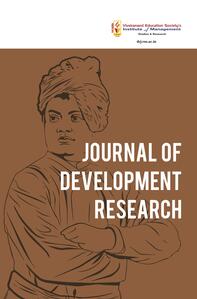
1Indian Institute of Technology (Indian School of Mines) Dhanbad, Jharkhand, India

Creative Commons Non Commercial CC BY-NC: This article is distributed under the terms of the Creative Commons Attribution-NonCommercial 4.0 License (http://www.creativecommons.org/licenses/by-nc/4.0/) which permits non-Commercial use, reproduction and distribution of the work without further permission provided the original work is attributed.
This commentary aims to examine the influence of gender on the accessibility of microloans in North Eastern Region (NER), India. Using data obtained from 200 entrepreneurs from NER, the article employed the logit model to address two key questions: (a) Does gender play an important role in access to finance? And (b) What is the role of Self-help Groups and education in access to finance? In the light of these research questions, findings from 200 small businesses are presented. The findings of the empirical analysis revealed that firm size, educational qualifications and gender of small business owners play a significant role in the accessibility of microcredit from financial institutions.
Microcredit, women entrepreneurship, gender, firm size, access to finance
Basumatary, H., Chhetri, P. C., & Raj, R. S. N. (2022). Hitting the target, mission the point? Microcredit and women empowerment in rural India. Journal of Poverty, 27(3), 217–234.
Chaudhuri, K., Sasidhara, S., & Raj, R. S. N. (2020). Gender, small firm ownership, and credit access: Some insights from India. Small Business Economics, 54(4), 1165–1181.
Dasgupta, R. (2006). An architectural plan for microfinance institutional network. Economic & Political Weekly, 41(11), 1905–1100.
Ferri, L., Ginesti, G., Spano, R., & Zampella, A. (2018). Exploring the entrepreneurial intention of female students in Italy. Journal of Open Innovation, 4(27), 1–10.
Ghosh, S., & Vinod, D. (2017). What constrains financial inclusion for women? Evidence from Indian micro data. World Development, 92, 60–81. https://doi.org/10.1016/j.worlddev.2016.11.011
Lensink, R., & Hermes, N. (2007). The empirics of microfinance: What do we know? The Economic Journal, 117(517), F1–F10.
Menon, N., & Rodgers, M. Y. (2011). How access to credit affects self-employment: Differences by gender during India’s rural banking reform. The Journal of Development Studies, 47(1), 48–69.
Patel, C. P., Lenka, S., & Parida, V. (2022). Caste-based discrimination, microfinance credit scores, and microfinance loan approvals among females in India. Business and Society, 61(2), 327–388.
Rehman, A. (2023). Essays on loan disbursed to microfinance institutions by financial institutions: Insights from India. International Journal of Management and Business Research, 7(3), 43–49.
Srinivasan, N. (2008). Sustainability of SHGs in India. In K. G. Karamakar (Ed.), Microfinance in India (pp. 177–178). Sage Publications.